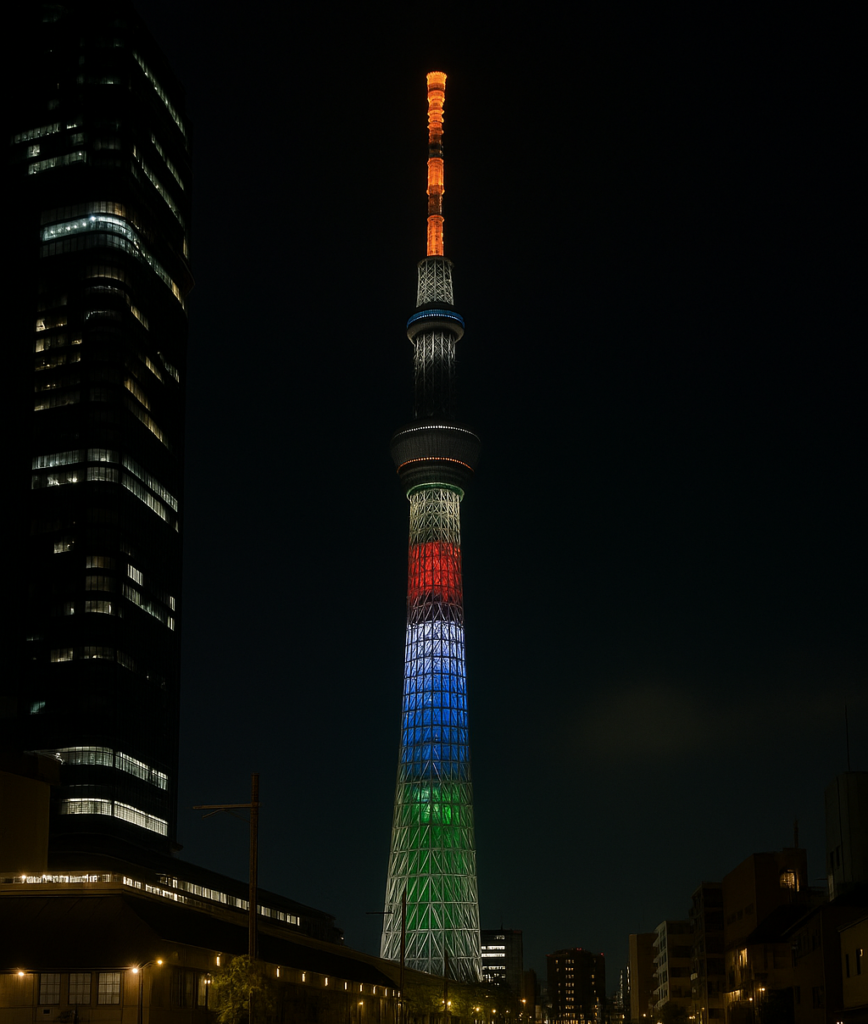On a clear evening in Japan’s capital, the Tokyo Skytree — the tallest tower in the country and one of its most striking modern symbols — was lit in the hues of saffron, white, and green. The gesture, timed with the arrival of Indian Prime Minister Narendra Modi, stood as a vivid emblem of the growing partnership between India and Japan.
A Diplomatic Signal in Lights
The 634-meter tower, visible across Tokyo’s skyline, was transformed into a canvas of the Indian tricolor, reflecting across the Sumida River and attracting scores of passersby who stopped to watch and photograph the spectacle. Officials framed the display as a tribute to India’s leader, but also as a signal of the broader friendship shaping ties between the two Asian democracies.
Talks Framed by Shared Goals
Mr. Modi’s visit to Tokyo includes talks with Prime Minister Fumio Kishida, focusing on defense cooperation, technology transfers, clean energy initiatives, and infrastructure projects — most notably the Mumbai-Ahmedabad high-speed rail line, a flagship joint venture. The illumination of the Skytree, officials suggested, was a reminder that diplomacy often finds its expression in cultural gestures as much as in policy agreements.
Partnership Across the Indo-Pacific
The India-Japan relationship has in recent years taken on greater weight in the Indo-Pacific, where both countries see themselves as anchors of stability and counterbalances to regional challenges. From semiconductor manufacturing to maritime security, their cooperation increasingly spans not only economics but also strategic and global concerns.
A Symbol Beyond Politics
For many in Tokyo — Indian expatriates who gathered at the site and Japanese citizens who paused on their commute — the tricolor display was more than statecraft. It was a reminder that friendships between nations are also built on gestures of respect, visible in shared symbols that resonate far beyond the halls of diplomacy.


